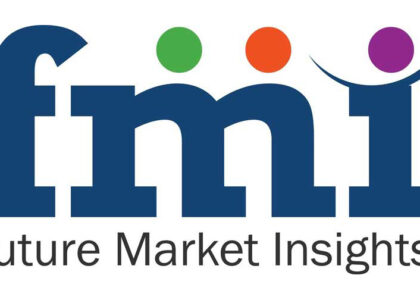Anticipated to attain a value of US$ 1.89 billion in 2023, the global compostable plastic packaging material market is poised for substantial growth, supported by advancements in composting infrastructure. This positive trajectory is expected to persist, with the market forecasted to experience a Compound Annual Growth Rate (CAGR) of 5.2% from 2023 to 2033, reaching a substantial US$ 3.1 billion by 2033. The increasing emphasis on eco-friendly packaging solutions and improvements in composting facilities underscore the market’s vital role in addressing sustainability concerns, making it a key player in the evolving landscape of environmentally conscious packaging alternatives.
Compostable plastic packaging materials stand out as a greener alternative to traditional plastics due to their capacity to decompose into natural components during composting processes. These materials are commonly sourced from renewable materials like corn starch, sugarcane, or cellulose, contributing to a decrease in dependence on fossil fuels and non-renewable resources.
It is a known fact that plastic is the packaging materials’ foundation. However, as synthetic polymers are not capable of decomposing on natural count, they have been deteriorating the environment since the last few years. As such, compostable plastic packaging material is looked upon as a good alternative to plastic. The properties are analogous to conventional plastic – like shelf stability, durability, barrier properties, and likewise.
The United States is emerging as a promising market for compostable packaging material due to the increasing demand for sustainable solutions. Recent analysis by FMI projects that the U.S. will account for approximately 86% of total sales in North America until 2033. This growth is largely attributed to the escalating awareness of sustainability, which is gaining momentum among both consumers and businesses. The country is expected to maintain a robust compound annual growth rate (CAGR) of 5.1% over the analysis period.
Request Sample: https://www.futuremarketinsights.com/reports/sample/rep-gb-5895
With growing awareness regarding environmental hazards related to plastics, the consumers are preferring eco-friendly packaging solutions. This is one of the major factors accelerating the compostable plastic packaging material market and the scenario is expected to remain the same even in the forecast period.
Cafeterias preferring to go green are into adoption of bio-based plastic. The catering services, quick service restaurants are increasingly adopting compostable plastic packaging material. This is actually response to the alarming figures released by the UN; i.e. by the year 2040, plastic would add 23-37 Million metric tons of waste into ocean every single year if left unchecked.
Future Market Insights has entailed these facts with insights in its latest market study entitled ‘Compostable Plastic Packaging Material market’. It has its team of analysts and consultants doing the rounds through macros and micros.
“With food chains witnessing an exorbitant rise in home deliveries, the global compostable plastic packaging material market is bound to grow on a good note in the forecast period”, says an analyst from Future Market Insights.
Key Takeaways from Compostable Plastic Packaging Material Market
- North America holds the largest market share with the US being subject to rising awareness regarding sustainability.
- The Asia-Pacific is expected to grow at the fastest rate in the compostable plastic packaging material market. This could be attributed to countries like India ruling the roost. Expansion of FMCG sector coupled with consumers shifting toward e-Commerce is expected to keep the cash registers ringing in the forecast period.
Competitive Material
- Cardia Bioplastics, in September 2019, did launch a certified home compostable biopolymer resin.
- Danimer Scientific LLC, in August 2021, completed acquisition of Novomer, Inc. (a developer of conversion technology). It makes provision for low net carbon inputs into manufacturing PHA-based resins.
- BASF SE, in September 2021, entered into collaboration with WPO Polymers for distributing biopolymer ecovio for the certified compostable bags.
- The year 2021 saw Amcor Ltd. announcing that its team had gone ahead with creating sustainable packaging solutions for margarine and butter comprising paper. This paper wrapper comes across as being 38% lighter as compared to paper and aluminum packaging and does lessen carbon footprint by ~80%.
- Smurfit Kappa, in the year 2021, did come up with eBottle packaging solutions to expand beverages market online. The range is found to be all the more sustainable. It constitutes recyclable raw material and could be customized as per bottle sizes and shapes.
Request Report Methodology: https://www.futuremarketinsights.com/request-report-methodology/rep-gb-5895
The Key Players Are:
- BASF SE
- Kaneka Corporation
- FKuR Kunststoff GmbH
- Cardia Bioplastics
- Novamont S.p.A.
- Danimer Scientific LLC
- Grabio Greentech Corporation
- Northern Technologies International Corporation
- NatureWorks LLC
- S.K. Chemicals Co., Ltd.
- Minima Technology Co. Ltd.
- Biotec Pvt. Ltd.,
- Green Dot Holdings LLC
Market Drivers:
- Environmental Concerns: Growing awareness of environmental issues and the need for sustainable practices has driven the demand for compostable plastic packaging materials. Consumers and businesses are increasingly seeking alternatives to traditional plastics to reduce their environmental impact.
- Regulatory Support: Governments and regulatory bodies in various regions are implementing stricter regulations to reduce plastic waste and encourage the use of eco-friendly packaging materials. Supportive policies and incentives can drive the adoption of compostable plastics in packaging.
- Consumer Preferences: Changing consumer preferences towards eco-friendly and sustainable products have a significant impact on the demand for compostable plastic packaging materials. Many consumers are willing to pay a premium for products with environmentally friendly packaging.
- Corporate Sustainability Initiatives: Many companies are incorporating sustainability into their corporate strategies. This includes adopting compostable packaging materials as part of their commitment to reducing their carbon footprint and contributing to a circular economy.
- Technological Advancements: Ongoing research and development in materials science and technology are leading to the creation of compostable materials with improved properties, making them more attractive to businesses seeking viable alternatives to traditional plastics.
Market Restraints:
- Costs: Compostable plastic packaging materials can be more expensive to produce compared to traditional plastics. The higher production costs may be a barrier to adoption for some businesses, particularly smaller ones with limited budgets.
- Limited Infrastructure: The success of compostable plastics relies on the availability of appropriate waste management infrastructure, including composting facilities. In regions where such facilities are lacking, the effectiveness of compostable plastics may be limited, hindering market growth.
- Performance Issues: Some compostable plastics may not have the same performance characteristics as traditional plastics, such as durability and barrier properties. This can be a concern for certain applications, affecting the adoption of compostable materials in specific industries.
- Awareness and Education: Lack of awareness and understanding among consumers and businesses about compostable plastics, their proper disposal, and their benefits can impede market growth. Education campaigns may be needed to address misconceptions and promote the advantages of compostable packaging.
Buy Now/Purchase: https://www.futuremarketinsights.com/checkout/5895
Key Segmentations-
By Material:
- PBAT
- PBS
- PLA
- PHA
- Starch Blends
- Others
By Application:
- Bags
- Pouches
- Boxes
- Bottles
- Cups
- Trays
- Plates & Bowls
- Others
By End User Industry:
- Food Service
- Food & Beverage
- Cosmetics & Personal Care
- Homecare
- Healthcare
- Others
About Future Market Insights (FMI)
Future Market Insights, Inc. (ESOMAR certified, recipient of the Stevie Award, and a member of the Greater New York Chamber of Commerce) offers profound insights into the driving factors that are boosting demand in the market. FMI stands as the leading global provider of market intelligence, advisory services, consulting, and events for the Packaging, Food and Beverage, Consumer, Technology, Healthcare, Industrial, and Chemicals markets. With a vast team of over 5000 analysts worldwide, FMI provides global, regional, and local expertise on diverse domains and industry trends across more than 110 countries.
Contact Us:
Future Market Insights Inc.
Christiana Corporate, 200 Continental Drive,
Suite 401, Newark, Delaware – 19713, USA
T: +1-845-579-5705
For Sales Enquiries: sales@futuremarketinsights.com
Website: https://www.futuremarketinsights.com
LinkedIn| Twitter| Blogs | YouTube



